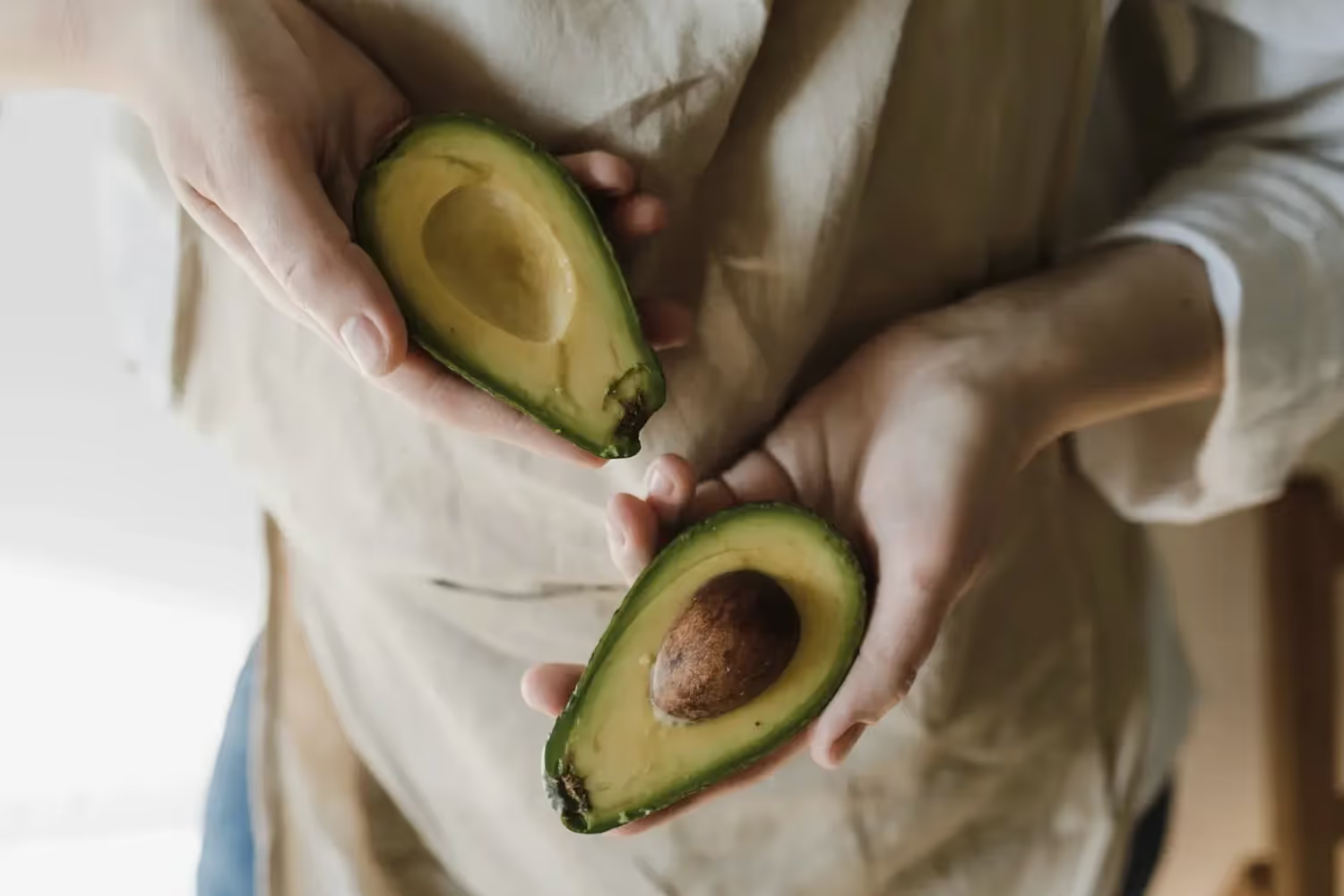
Reversing Autoimmune Rashes Naturally: A Holistic Approach to Healing and Well-Being
An autoimmune rash can be a distressing and persistent challenge, whether or not you’ve been diagnosed with an autoimmune condition. Fortunately, there are holistic remedies that may help to reverse this kind of rash naturally. This symptom of autoimmune disease is the result of the immune system attacking the body and causing inflammation, discomfort, and a wide range of symptoms that affect daily life. Inflammatory symptoms may show up as a rash if you have a chronic autoimmune illness, but the type and severity of the rash may depend on the type of autoimmune disease you have. Read on to find out more on how to reverse autoimmune rashes naturally with a holistic approach to diet and lifestyle.
Understanding Autoimmune Rashes
An autoimmune rash is an inflammatory response triggered by the immune system's misguided attack on healthy cells. It often appears as itchy, red patches or bumps that may blister and ooze when aggravated. While these rashes can result from various factors, their presence may indicate an underlying autoimmune disorder that requires attention. (Source)
Autoimmune Rash and Other Conditions
An autoimmune rash is a visible manifestation of an underlying autoimmune condition, but it doesn't often appear in isolation. If you are experiencing an autoimmune rash, you may also notice a range of other symptoms that indicate your immune system is compromised. Following are some common symptoms associated with autoimmune rashes.
Gut Issues
A strong connection exists between gut health and the immune system. If you are dealing with autoimmune rashes you may also experience digestive issues such as bloating, gas, constipation, or diarrhea, often signaling food sensitivities or an imbalance in gut flora. (Source)
Brain Fog
Brain fog, characterized by forgetfulness, difficulty concentrating, and a general sense of mental cloudiness, can be another telltale sign of autoimmunity. This cognitive impairment may be related to inflammation affecting the brain but may also be tied to other inflammatory conditions and chronic illnesses as well. (Source)
Food Sensitivities
Autoimmune conditions often go hand-in-hand with food sensitivities or intolerances. Your immune system may overreact to certain foods, triggering inflammation and exacerbating autoimmune rashes and other symptoms. (Source)
Fatigue
Extreme fatigue and a general lack of energy can also accompany autoimmune rashes, as your body's resources are diverted to fighting perceived threats and managing the resulting inflammation. (Source)

Your Immune System and Autoimmune Rash
At the core of autoimmune rashes and the myriad associated symptoms is a compromised immune system. When the immune system is functioning optimally, it can distinguish between harmful invaders and the body's own cells. However, in cases of autoimmune disease, this delicate balance is disrupted, leading to a confused immune response that targets healthy cells.
The appearance of an autoimmune rash is often a signal that your immune system is struggling to maintain balance and protect your body effectively, but by addressing the factors that contribute to a weakened immune system — such as diet and lifestyle choices — you can take crucial steps toward restoring your immune system's proper function and, in turn, reduce the frequency and severity of autoimmune rashes and other symptoms. (Source)
The Power of Diet and Lifestyle Changes
A key component in reversing autoimmune rashes naturally is adopting a healthier diet and making conscious lifestyle adjustments to reduce overall inflammation. Certain foods are known to exacerbate inflammation, while others can help reduce it. By identifying and eliminating dietary inflammatory triggers, you may be able to start alleviating the symptoms associated with autoimmune rashes.
A crucial aspect of managing and reversing autoimmune rashes is understanding the effect of food on these conditions. The food you consume can directly affect your immune system, either promoting or reducing inflammation in your body. By identifying and eliminating inflammatory triggers and incorporating anti-inflammatory foods into your diet, you can create a more supportive environment for your immune system to function optimally.
In addition to diet, lifestyle changes such as managing stress, getting adequate sleep, and engaging in regular physical activity can significantly affect your body's ability to heal itself. These factors work together to create a supportive environment for your immune system, fostering balance and reducing the likelihood of autoimmune flare-ups. (Source)
Inflammatory Foods and Autoimmune Rashes
Consuming certain pro-inflammatory foods may worsen autoimmune rashes and other symptoms by triggering or exacerbating inflammation in the body. (Source)
Common inflammatory foods it may help you to avoid include the following.
Gluten
Found in wheat, barley, and rye, gluten is a protein that can trigger an inflammatory response in those with gluten sensitivity or celiac disease, and may contribute to inflammation in some autoimmune conditions.
Dairy
Some people are sensitive to proteins such as casein and whey that are found in dairy products, and that sensitivity may contribute to inflammation and exacerbate autoimmune rashes.
Refined Sugars
High consumption of refined sugars can cause spikes in blood sugar levels, promoting inflammation and worsening autoimmune symptoms.
Processed Foods
Foods high in trans fats, artificial additives, and preservatives can contribute to inflammation and negatively affect the immune system.
Anti-Inflammatory Foods To Reverse Autoimmune Rash
In contrast to inflammatory foods, anti-inflammatory foods can help reduce inflammation in your body and support your immune system.
It's important to be mindful of histamine levels in your food to minimize the risk of triggering a flare-up. Histamine friendly foods can be incredibly beneficial for those living with an autoimmune rash and may help reduce inflammation as well as redness, itching, and discomfort associated with the condition. (Source)
By incorporating low histamine foods into your diet, you can not only manage symptoms but improve your digestion and health of your gut, which is where histamine intolerance begins. Some anti-inflammatory, histamine-friendly foods follow.
Fruits and Vegetables
Rich in antioxidants and essential nutrients, fruits and vegetables can help combat inflammation and lower histamine levels due to their high quercetin content. Quercetin is an antioxidant that fights inflammation and is especially useful for histamine intolerance. Produce that is particularly rich in quercetin includes apples, onions, grapes, cherries, and berries. (Source)
Healthy Fats
Foods high in monounsaturated and polyunsaturated fats as well as omega-3 fatty acids have been shown to reduce inflammation, balance healthy histamine levels, and support immune function. These foods include avocados, olive oil, walnuts, fatty fish, and flaxseeds, to name a few. (Source)
Spices and Herbs
Certain spices and herbs, such as turmeric, ginger, and cinnamon, have natural anti-inflammatory properties and can be easily incorporated into low histamine meals. (Source)
By making mindful food choices, you can directly influence the expression of autoimmune rashes and support your immune system in maintaining balance. In the next section, we'll explore the lifestyle changes that can further help reverse autoimmune rashes. (Source)

Lifestyle Changes for Reversing Autoimmune Rash
In addition to addressing autoimmune rash with dietary choices, attention to lifestyle factors can make a difference in reducing inflammation and promoting skin health.
Recognizing and Avoiding Toxic Ingredients
Many personal care and household items contain chemicals that can irritate the skin, disrupt the endocrine system, increase free radical exposure, or promote inflammation. To minimize the risk of exacerbating autoimmune rashes or truly any skin irritation in general, it's important to be aware of the ingredients in the products you use daily. Laundry detergents, shampoos, conditioners, soaps, household cleaners, deodorants, toothpastes, and perfumes may often contain chemicals that could contribute to inflammation and skin irritation. (Source, Source)
Some potentially inflammatory ingredients to watch out for include:
Sodium lauryl sulfate
Sodium lauryl sulfate is a detergent that has the potential to irritate already compromised skin and could exacerbate autoimmune rashes. (Source)
Parabens
Parabens are chemical preservatives that have been linked to hormone disruption and may contribute to inflammation. (Source)
Phthalates
Used in a wide range of products, including fragrances and plastics, phthalates have been associated with endocrine disruption and adverse health effects. (Source)
Synthetic fragrances
Artificial scents can cause skin irritation and allergies, worsening autoimmune rashes in sensitive individuals. (Source)

Non-Toxic Alternatives for Personal Care and Household Products
To reduce the risk of irritation and inflammation associated with toxic ingredients, consider switching to non-toxic alternatives for your personal care and household products. You can either purchase items from brands that prioritize natural, non-toxic ingredients, or try your hand at making your own DIY versions. By making these lifestyle changes, you can reduce your exposure to harmful substances and create a healthier environment for your skin and immune system. (Source)
You can find non-toxic alternatives of the following items with the Environmental Working Group’s Healthy Living App.
Natural Laundry Detergents
Look for plant-based, fragrance-free options, or try making your own detergent using ingredients such as castile soap, washing soda, and baking soda.
Shampoo and Conditioner
Opt for sulfate-free, paraben-free, and fragrance-free products, or experiment with natural alternatives such as apple cider vinegar rinses and coconut oil.
Household Cleaners
Replace harsh cleaners with gentler options such as vinegar, baking soda, and lemon juice, which can be just as effective for cleaning and disinfecting.
Personal Care Products
Seek out deodorants, toothpastes, and soaps made with natural ingredients, or try making your own with simple ingredients such as coconut oil, shea butter, and essential oils.

Supplements and Herbs for Healing Autoimmune Rash
In addition to dietary and lifestyle changes, incorporating supplements and herbs into your daily routine can be an effective way to support your immune system and promote skin health in the context of autoimmune rashes. Supplements and herbs can provide essential nutrients and compounds that work to enhance the immune system's function and support the body's natural healing processes by:
- providing essential nutrients
- reducing inflammation
- aiding the body in the elimination of toxins
- restoring balance
Some medicinal herbs and supplements that may be helpful taken internally or topically to calm and possibly reverse autoimmune rash may include:
- turmeric and circumin
- German chamomile
- calendula
- witch hazel
- aloe vera
- marshmallow root
- oats
- oat straw
- echinacea
- comfrey root
- yarrow
- plantain leaf
- sage leaf
- St. John’s wort
- evening primrose oil
- oak bark
- walnut leaf
- linseed
- fenugreek seed

Recommended Dosages and Precautions for Supplements and Herbs
When incorporating supplements and herbs into your routine, keep in mind that individual needs may vary. It's always a good idea to consult with a health care professional or a qualified herbalist to determine the best course of action for your specific situation. Some general guidelines for supplements and herbs include:
- paying attention to how your body responds to the herbs and supplements
- starting with the lowest recommended dosage and gradually increasing if needed
- being aware of potential interactions between supplements, herbs, and medications you may be taking
- choosing high quality, reputable brands and products to ensure you're getting the most effective and safest supplements and herbs
Why a Holistic Approach Matters To Reverse Autoimmune Rash Naturally
In the face of discomfort and irritation, it's tempting to turn to quick fixes such as antihistamines or corticosteroids to provide some relief. While these medications can provide temporary relief, they often fail to address the root cause of the problem. By adopting a holistic approach to healing, you can tackle your autoimmune rashes at the source, promoting long-term wellness and reducing the need for symptom management. By understanding and addressing the underlying causes of your autoimmune rash, you'll be well on your way to a healthier, more comfortable life. (Source)
The Bottom Line
Healing autoimmune rashes naturally involves a multidimensional approach that addresses dietary, lifestyle, and environmental factors. Making mindful choices in diet and personal and household products can reduce your daily exposure to inflammatory agents. When appropriate, targeted supplements and herbs can help create a supportive environment for your immune system’s optimal function and may potentially reverse autoimmune rashes.
By focusing on the root causes of these autoimmune rashes and promoting overall health and well-being with diet and lifestyle choices, you can empower your body to heal itself and maintain a state of balance for the long term. If you’re not sure how to improve your health with a food first approach, the Nutritional Therapy Practitioners at WellTheory can help. With a personalized approach and gentle guidance and education, our WellTheory membership can take the guesswork out of your diet and tailor a plan that is unique to your needs and circumstances.
Tips & Tricks
.avif)
The Ultimate Guide To Phytonutrients
Lycopene is the phytochemical that gives fruits and vegetables their red color. Lycopene is a potent antioxidant and has anti-inflammatory properties that protect the body from oxidative stress. Lycopene has also been found to decrease “bad” low density lipoprotein (LDL) and increase “good” high density lipoprotein (HDL) cholesterol.
Lycopene may also protect the skin against ultraviolet (UV) damage from the sun. One small study found that participants who added 16milligrams of lycopene to their diet every day had less severe skin reactions to UV light over 10 weeks than a control group without the added lycopene. (Of course, consumption of lycopene-rich foods doesn’t replace sunscreen!)

Ways to incorporate more red foods into your diet
- Add red-colored fruits and vegetables to salads.
- Opt for red pasta sauces made from tomatoes instead of carbonara or Alfredo sauce. Red sauces can also be used as toppings for other dishes!
- Have salsa as a dip alongside tortilla chips or eggs, or on top of potatoes.
- Make a juice using lycopene-rich foods.
- Add some goji berries to your chrysanthemum, chamomile, or any other tea.

Phytonutrients in Orange Foods
Carotenoids are responsible for yellow, orange, and red color in many fruits and vegetables. Research suggests that one carotenoid in particular, beta-carotene, may protect against decline in lung function. A study done in 2017 also suggested that eating fruits and vegetables rich in carotenoids such as beta-carotene, alpha-carotene ,and beta-cryptoxanth in had protective effects against lung cancer.
Like lycopene, dietary intake of beta-carotene has protective effects against diseases that are mediated by oxidative stress, such as diabetes, cancer, and autoimmune diseases. High levels of alpha carotene are associated with longevity — one large U.S. study found that high levels of alpha-carotene in the blood were linked with a reduced risk of death over a 14 year period. Aside from its antioxidant effects, the carotenoid beta-cryptoxanthin may prevent bone loss and may have anti-inflammatory and anticancer properties.

Ways to incorporate more orange foods into your diet
- Have a baked sweet potato instead of white potato
- Add turmeric powder to stir-fries, or make a warm cup of ginger and turmeric tea.
- Have orange-colored foods as a snack throughout the day, such as tangerines, papaya, or peaches
- Make a pumpkin, butternut squash, or carrot soup.
- Make a smoothie out of orange-colored foods
.avif)
Phytonutrients in Yellow Foods
Lutein and zeaxanthin are also part of the carotenoid family, along with beta-carotene, alpha-carotene, and beta-cryptoxanthin. Lutein and zeaxanthin are the only dietary carotenoids that reach the retina, the thin layer of tissue that lines the inside on the back of the eye. They are known to support eye health and have preventative effects against age-related macular degeneration, an eye disease that can lead to the loss of vision as we age. However, lutein and zeaxanthin also have strong antioxidant and anti-inflammatory capabilities. Zeaxanthin can also help to recycle glutathione, another important antioxidant in the body. (9, 15)

Ways to incorporate more yellow foods into your diet
- Add diced yellow bell peppers and corn to your stir-fry.
- Make honey and lemon tea.
- Make stove-top popcorn with healthy fats such as olive oil and coconut oil.
- Roast, bake, or mash yellow (Yukon) potatoes instead of white potatoes.
- Use bananas to make banana pancakes and bread.
- Slide some banana into your oatmeal.
- Blend frozen pineapple, almond milk, and honey or maple syrup to make pineapple sorbet.

Phytonutrients in Green Foods
Dark green, leafy cruciferous vegetables are a good source of sulfur (isocyanate, sulforaphane, glucosinolate). Our body needs sulfur in order to synthesize certain essential proteins. These sulfur compounds break down into isothiocyanates and indoles in the gut, which are known to have antibacterial, antiviral, antifungal, and anti-inflammatory effects. (36, 52, 33)
Research suggests that sulforaphane may support heart health by reducing inflammation and lowering blood pressure. It may also have antidiabetic effects. One study found that sulforaphane reduced fasting blood sugar in patients with type 2 diabetes. (55, 41, 47)
Glucoraphanin, a glucosinolate that’s found in some cruciferous vegetables, has been found to protect the blood–brain barrier in mice with induced experimental autoimmune encephalomyelitis (used to study MS, which can’t be induced in the same way), suggesting it may reduce the risk of developing MS. (16, 40)

Ways to incorporate more green foods into your diet
- Add chopped spinach and asparagus to an omelet or frittata.
- Make a green smoothie using a variety of green vegetables and fruits.
- Make kale chips using green kale.
- Use basil or any dark green vegetable of your choice to make a pesto sauce.
- Dip cucumbers in hummus, or celery in peanut butter.
- Make wraps using lettuce leaves, cabbage leaves, perilla leaves, or Swiss chard.
- Saute your choice of green vegetables with garlic, lemon, and olive oil.

Phytonutrients in Blue/Purple/Black Foods
Anthocyanins are phytochemicals that give red, blue, and purple plants their vibrant coloring. Anthocyanins have antioxidant properties that may boost heart health and reduce the risk of developing cardiovascular-related and other chronic diseases. (26)
Anthocyanin-rich foods have been linked to reductions in inflammation and reduced blood sugar concentrations, suggesting they may also have antidiabetic effects. Anthocyanins have also been found to protect eye health. One study found that daily supplementation with pharmaceutical anthocyanins improved the visual function of individuals with normal tension glaucoma (where the optic nerve is damaged despite pressure in the eye being normal). (30, 43)
Other phytochemicals called stilbenoids are typically found in grapes and blueberries. Like anthocyanins, stilbenoids have been shown to have a variety of benefits such as protective effects on the heart and brain, as well as antidiabetic, anticancer, and anti-inflammatory properties. (4)

Ways to incorporate more blue/purple/black foods into your diet
- Substitute purple cabbage, carrots, and onions for green cabbage, orange carrots, and white onions.
- Add blueberries, blackberries, black currants, figs, and plums to yogurt or oatmeal.
- Have a baked purple sweet potato instead of a white potato, or use them to make sweet potato patties.
- Make sauerkraut using purple cabbage.
- Use purple vegetables in salads.
- Make a cannelloni using eggplant.

Phytonutrientsin White/Tan/Brown Foods
Allicin, a phytochemical produced when garlic is chopped or crushed, has been associated with a lower risk of coronary events in older adults. Research suggests allicin may help reduce LDL and total cholesterol levels when consumed for more than 2 months. (8, 39)
Garlic is well known for its antimicrobial effects and has historically been used to combat infectious diseases. It is also known to be effective against a variety of bacteria, such as Salmonella, Escherichia coli, and Staphylococcus aureus. (8)
Another phytonutrient that is found in many white, tan, and brown foods is quercetin. Quercetin has anti-inflammatory properties and may be effective against obesity, cancer, viruses, allergies, and high blood pressure. (5)
Serum C-reactive protein (CRP) levels are a biomarker of inflammation in the body. High CRP levels are associated with heart disease, obesity, and lupus. One study done in 2008 found that the intake of foods rich in flavonoids, such as quercetin, is associated with lower serum CRP concentrations. (12)

Ways to incorporate more white/tan/brown foods into your diet
- Use dates instead of refined sweeteners to sweeten a dish or drink.
- Add onions and mushrooms to a stir-fry.
- Make your own granola or trail mix using whole grains, nuts, and seeds.
- Stir-fry lotus root with bell peppers and garlic sauce.
- Add cacao to smoothies, yogurt, or oatmeal.
- Pickle some Japanese turnip to have as a snack or side dish.

The Bottom Line on Phytonutrients
The thousands of phytochemicals produced by plants for their own protection may also help prevent and treat many of our own medical conditions and diseases. Phytonutrients give fruits, vegetables, grains, nuts, and other plant foods their variety of colors, so “eat the rainbow” to maximize the health benefits offered by these plentiful chemical compounds.
